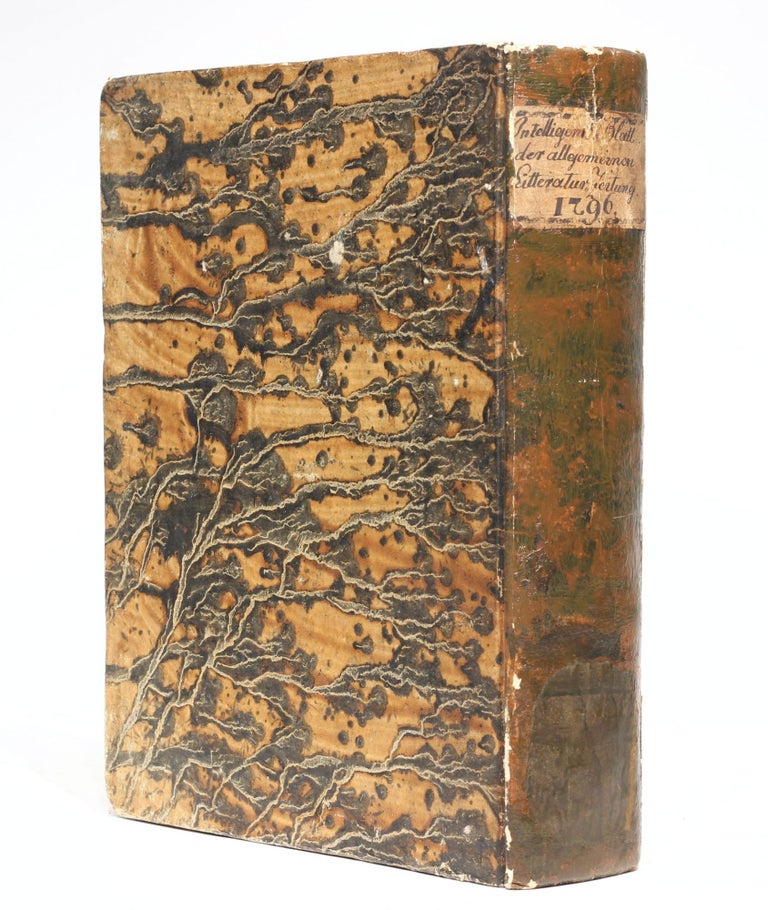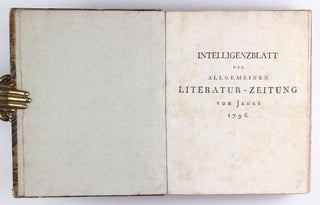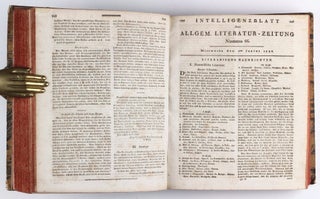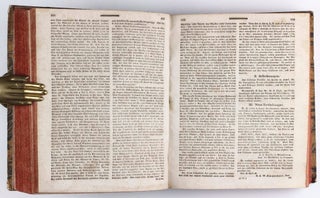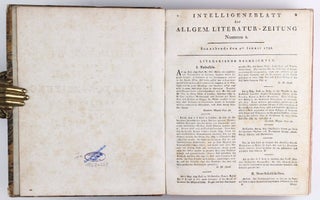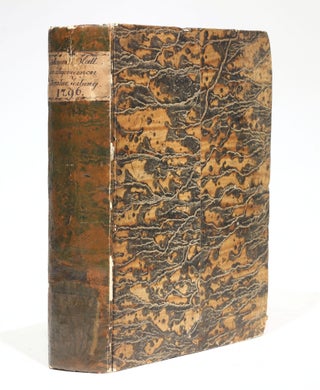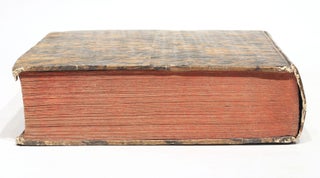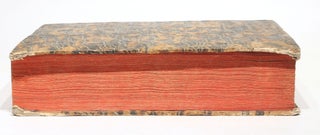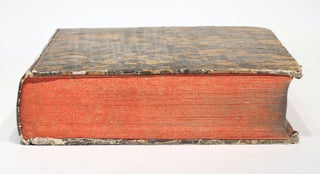Gauss' first publication
Neue Entdeckungen.
Jena: Joh. Christ. Gottfr. Göpferdt, 1796.
1st Edition. Hardcover. Very Good. Item #003345
In: Intelligenzblatt der Allgemeinen Literatur-Zeitung vom Jahre 1796, No. 66 (June 1, 1796), col. 554. Jéna: Joh. Christ. Gottfr. Göpferdt, 1796. 4to (292 x 195 mm). Entire vol.: half title, drop title for each number, 1536 collumns. Bound in contemporary German marbled cardboard with varnish-painted spine, hand-lettered paper spine label, red-dyed edges (rubbing and paper-chipping to extremities, corners scuffed and bumped). Text evenly browned, occasional minor spotting. Provenance: Landeskirchliche Bibliothek Hamburg (ink stamp including deaccession stamp to half-title verso). ----
EXCEPTIONALLY RARE FIRST EDITION OF GAUSS' FIRST PUBLICATION, which is a short announcement of his discovery of the constructibility by ruler and compass of the regular polygon of seventeen sides. This discovery is a major, if not unhoped-for, advance in the solution of a problem that has been sought since Greek Antiquity. At barely 19 years of age, Gauss (1777-1855) had thus secured universal fame and the title of "prince of mathematicians." It is said that Gauss, carrying this feat so high, requested that a 17-sided regular polygon be engraved on his tombstone. Raymond Clare Archibald, in his paper about the history of Gauss' discovery, cites from a letter of Gauss to Gerling dated Jan. 6, 1819: "The history of this discovery has up to the present nowhere been publicly alluded to by me; I can give it very exactly, however. The day was the March 29, 1796 and chance had absolutely nothing to do with it. Before this, indeed during the winter of 1796 (my first semester in Göttingen), I had already discovered everything related to the separation of the roots of the equation xP-1/x-1=0 into two groups, on which the beautiful theorem on the lower part of page 637 depends, without making note of the day. After intensive consideration of the relation of all the roots to one another on arithmetical grounds, I succeeded during a holiday in Braunschweig, on the morning of the day alluded to (before I had got out of bed), in viewing this relation in the clearest way, so that I could immediately make special application to the 17-side and to the numerical verification. Of course still other investigations of the seventh section of the D.A. were added later. I announced this discovery in the Literaturzeitung of Jena where my advertisement was published in May or June 1796" (Archibald p.324). Literature: DSB V, p.299; R. C. Archibald, Gauss and the Regular Polygon of Seventeen Sides, in: The American Mathematical Monthly, 1920, vol. 27, 7/9, pp. 323-326). - Visit our website to see more images!
Sold
Delivery time up to 10 days. For calculation of the latest delivery date, follow the link: Delivery times
Lieferzeit max. 10 Tage. Zur Berechnung des spätesten Liefertermins siehe hier: Lieferzeiten


